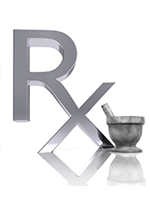The cancer drug pipeline is bursting with promising new therapies for a variety of tumors. Of the many investigational drugs presented at ASCO 2011, some of the most promising agents now in phase 2 or 3 clinical trials are discussed below and throughout this special issue. Cabozantinib—an oral inhibitor of MET kinase and the vascular endothelial growth factor (VEGF) receptor— produced high rates of disease control in several solid tumor types and fully or partially eliminated bone metastases in a randomized phase 2 study that was spotlighted at a press briefing during the meeting.
Disease control rates (demonstrated by response rate and stable disease) were 76% in liver cancer, 71% in prostate cancer, 58% in ovarian cancer, 45% in melanoma, 45% in breast cancer, and 40% in non–small-cell lung cancer (NSCLC). Complete or partial resolution of bone metastases on bone scans was seen in 80% of patients. Several phase 3 trials are being planned.
Iniparib, the PARP (poly ADP ribose polymerase) inhibitor being studied for the treatment of ovarian cancer, showed promise in a phase 2 trial of 41 platinum-sensitive patients in the setting of first recurrence. The overall response rate was 65%, and median progression-free survival (PFS) was 9.5 months. In a separate phase 2 study in the second line, the response rate was 25%, and 81% of patients derived clinical benefit.
Ganetespib is another agent investigated for NSCLC. Treatment with the heat shock protein 90 inhibitor ganetes - pib was associated with a disease control rate of 54%. The drug was evaluated for single-agent activity in a phase 2 study of 76 patients with advanced disease, many of whom carried tumor mutations. A phase 2b/3 trial has been initiated for ganetespib in combination with docetaxel. Crizotinib—an oral inhibitor of ALK and MET tyrosine kinases and their oncogenic variants—is yet another agent in clinical studies in the setting of NSCLC.
Crizotinib was associated with a 1-year survival rate of 74% and a 2-year survival rate of 54% in a study of 82 patients with ALK gene re arrangement. By comparison, historical controls who receive chemo - therapy have a 1-year survival rate of 44% and a 2-year survival rate of only 12% (see also article on page 28).
Semuloparin, an experimental anticoagulant (an ultra-low-molecular-weight heparin), reduced the risk of thromboembolic events by 64% in pa tients undergoing chemotherapy.
In the phase 3 Evaluation of AVE5026 in the Prevention of Venous Thromboembolism in Cancer Patients Undergoing Chemotherapy (SAVEONCO) study of 3212 patients, mostly with metastatic disease, 20 patients who received semuloparin (1.2%) and 55 who received placebo (3.4%) exper - ienced a thromboembolic event (P <.001), with similar rates of bleeding.
Semuloparin is administered 20 mg daily subcutaneously. Based on the results of this trial, its manufacturer, Sanofi Oncology, will soon submit regulatory filing for semuloparin.
Ruxolitinib, a Janus kinase inhib itor, reduced spleen size in 2 separate phase 3 studies in the treatment of 3 forms of myelofibrosis. The manufacturer, Incyte, filed for marketing approval in June 2011 (see also article on page 32). Two thirds of patients with ad vanced gastric or gastroesophageal junction cancer responded to a combination of telatinib (a small molecule inhibitor of VEGF receptors 2 and 3), capecitabine, and cisplatin as first-line therapy in an open-label study of 39 patients.
Cixutumumab, a monoclonal antibody that targets the insulin-like growth factor 1 receptor, demonstrated in a phase 2 clinical trial that 57% of 113 patients with adipocytic sarcoma ex - perienced stable disease when they received this new therapy.
Axitinib, a promising selective VEGF receptor 1, 2, and 3 inhibitor, extended PFS more than sorafenib as secondline therapy for metastatic renal-cell carcinoma. The median PFS was 6.7 months with axitinib versus 4.7 months with sorafenib.


